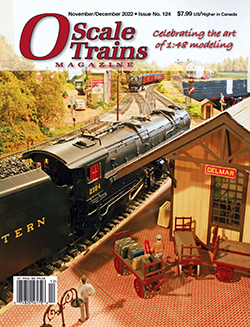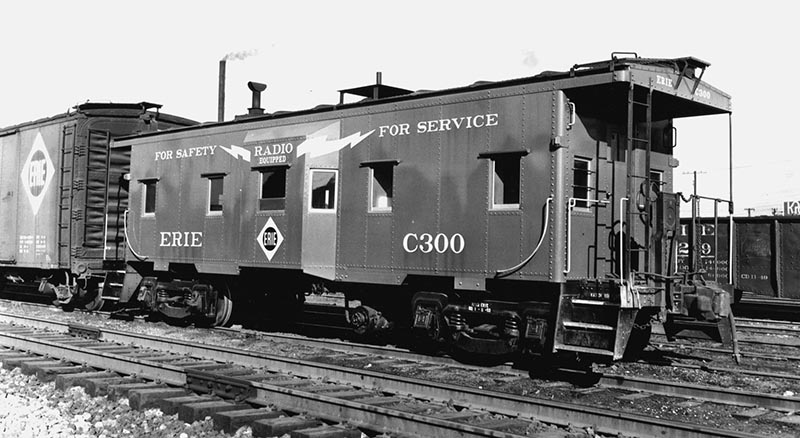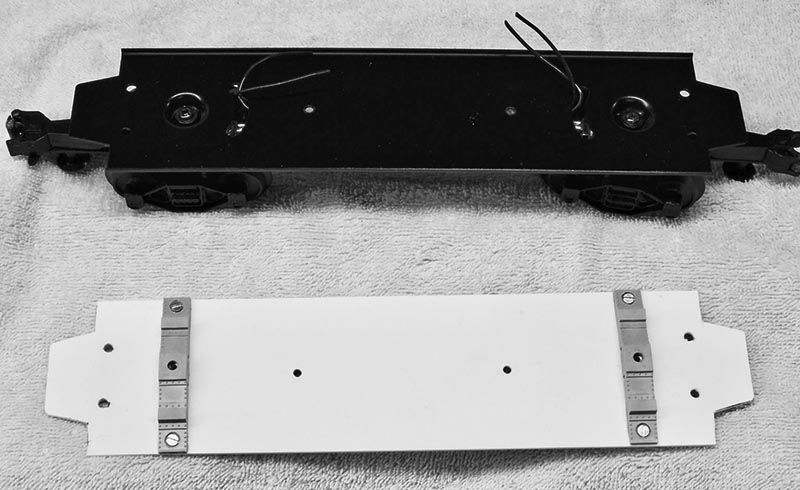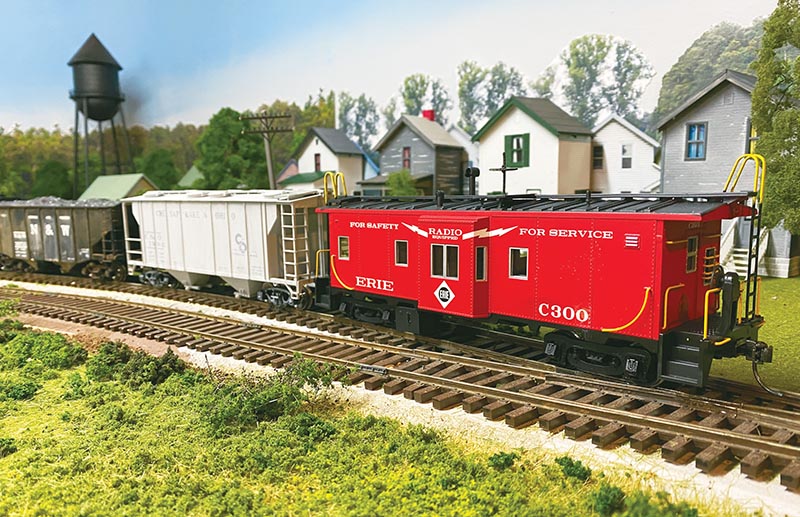 by Larry De Young/photos as noted
by Larry De Young/photos as noted
Coming out of World War Two, Erie Railroad had 120 modern cabooses and several hundred well-worn, turn-of-the-century, wood-bodied cabooses ripe for replacement. All were cupola-type cabooses. Fifty of the modern cars were 1929-30 era steel-framed, double-sheathed models that looked like wood cars, but were actually built more or less like welded steel truss bridges with a tongue-and-groove wood skin. The remainder were 1941-built riveted steel cars assembled at Erie’s shops from components supplied by Youngstown Steel Door Co. to Erie designs, prototype kits if you will.
Immediately after the war, Erie began a project to build another 100 steel cupola cabooses nearly identical to the 1941 cars except that they had welded instead of riveted exteriors. Both series of steel cars would prove durable, but were disliked by long-haul crews because of short wheelbases that made them very rough rides. So in 1952, when Erie sought to fully replace the last of the wood-bodied cabooses, they decided to consult with crews before placing the order. The process began with the building of one experimental bay window caboose at its car shops in Dunmore, near Scranton, Pa.

ABOVE: The nearly new Erie Railroad C300 is shown ready for a trip after it had been repainted into the new standard Erie bay window caboose scheme. The crew had yet to hang the markers for departure. The “brake wheel” ground effect antenna would be fitted later. Author’s Collection
The prototype (and it really was a “prototype”) bay window caboose was numbered C300. The numbering practice began with the earlier steel cupola cabooses numbering them with a “C” and a three-digit number. The earlier riveted ones were numbered C100-C169 and the welded ones were C170-C269. C300 was put out on the road to gather feedback from the rear-end crews about its good and bad points, amid publicity that almost gave Erie credit for the bay window caboose design. Clearly Erie did not come up with the idea; there were several roads already operating bay window cabooses by 1952.
After a period of in-service time, the railroad evaluated the performance of C300, and taking the feedback of the crews into account, ordered 50 similar cabooses from International Car Co., located in Kenton, Ohio. They were immediately put into through freight service and remained a main line presence for Erie, Erie Lackawanna, and Conrail, until cabooses were all but eliminated in the 1980s. Erie bay window cabooses proved to be durable indeed, with a few of them still serving in specialized service in 2021 on Norfolk Southern, CSX, and short lines.

ABOVE: The original MTH floor is shown with the trucks mounted. The dimples that made placement of scale trucks impossible without serious metal-work show in the floor. Below is the styrene replacement floor; the original floor was traced directly onto the styrene and the screw locations marked with a fine tip Sharpie.
I model Erie’s corporate successor, Erie Lackawanna, along with Pennsylvania Railroad, just before PRR was consumed in the Penn Central merger in 1968. My layout is essentially a switching railroad, so having a bay window caboose on the EL side of my operation really is unnecessary. However, as many readers will understand, when I saw a nicely decorated Erie bay window caboose like the ones that went past my childhood home, I had to have it. That model was produced by MTH to run on 3-rail track with toy train couplers, but it was to scale in its dimensions, was beautifully decorated as Erie C303, and resembled an Erie bay window caboose, specifically, the one-off C300. I decided to improve the MTH model, making it compatible with my scale O railroad and making it look even more like a proper Erie caboose…


